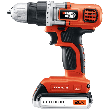Learning how to etch glass yourself isn't all that difficult a task, and can actually save you a lot of money in the long run. For example, buying a simple etched glass window film to install in your home can easily cost you $50 or more, and an actual etched window will cost even more. All you need to do is follow these easy steps, and you will have your own truly unique window, mirror, or other glass item for your home.
- Get your materials. There are a few materials that you will need to gather in order to successfully etch any glass. These materials are as follows: etching cream (which can be purchased at any arts and crafts, or home improvement store), window cleaner, safety glasses, foam brush, latex gloves, carbon paper, contact paper, the glass item, utility knife, scissors, and your pattern.
- Practice a bit. If you have never etched glass before, you really should practice a few times before you begin working on your final project. This will allow you to work out the kinks, and figure out exactly how to handle everything. A good practice item would be some glass jars or old glasses that you aren't going to use for anything else.
- Decide on your pattern. Decide on, or create, the pattern that you plan on using. There are plenty of patterns that you can purchase from a store, or you can use a picture, or some other design that you like.
- Transfer the contact paper. With the design firmly in hand, you can transfer the pattern onto the contact paper, and then onto the glass itself. Cut some contact paper so that it is a bit larger than the area you will be etching. Place the carbon paper over the contact paper, and then place the design onto the carbon paper. Using a pencil, pen, or stylus of some sort begin tracing the design. The carbon paper will transfer the design onto the contact paper. When you are finished with the design, you can then clean the glass item you will be etching. After cleaning the glass, and allowing it to dry, apply the contact paper. Make sure that as you do this there are no bubbles, bumps, or wrinkles in the paper. Cut out the areas of your design that are for the glass being etched. Use a utility knife to do this. Double check to make sure that the remaining contact paper is firmly attached to the glass.
- Put on your safety equipment. Since you will be working with a cream that is designed to eat away at glass, you really should wear some protective equipment. This means that you really should wear some latex gloves, safety glasses, and even long sleeved shirts.
- Apply the cream. When you have your safety equipment ready, you are almost ready to begin applying the cream. Before you begin brushing it on with your foam brush, double check the instructions that came with the package. This will allow you to know exactly how the manufacturer suggests that you use the cream. Apply a generous amount of the etching cream in accordance to the instructions from the manufacturer. Do not put the cream on too thin, or you will run the risk of uneven results.
- Allow it to sit. Place the glass item off to the side, where it will not be disturbed. Allow the item to sit for the amount of time stated by the instructions.
- Rinse it off. When the time has elapsed, you need to remove the cream. The best way to do this is by applying liberal amounts of water. Remove as much of the cream as you possibly can.
- Remove contact paper. Once you have removed as much of the cream as you can, it is time to remove the contact paper. You are now, for all intents and purposes finished with etching your glass.
With the contact paper finally removed, you will be able to really inspect and appreciate the work you have accomplished. That being said, you need to be sure that you as thoroughly as you possibly can. If you don't, the etching cream will continue to eat away at the glass, and possibly you if you touch it bare handed. When you have finished washing the glass, you will be ready to actually install it.
Author Bio
Lee Wyatt
Contributor of numerous Tips.Net articles, Lee Wyatt is quickly becoming a regular "Jack of all trades." He is currently an independent contractor specializing in writing and editing. Contact him today for all of your writing and editing needs! Click here to contact. Learn more about Lee...
Cleaning a Turkey Fryer
Using a deep fryer to cook a turkey has become one of the more popular ways to prepare these delicious birds in recent ...
Discover More
Replacing a Battery
No matter how well you take care of your car, you will eventually need to replace the battery. Replacing a battery is an ...
Discover More
Removing Engine Oil Stains from Asphalt
One of the first signs that you have an oil leak is to find the oil spot under your car. After you have handled the leak ...
Discover More
More Home Improvement Tips
Removing Tint from Windows
Window tinting, either on a car window or home window, can be a wonderful touch. At least it can be until the tint begins ...
Discover More
Installing a Storm Window
Have you ever noticed how no one really thinks about storm windows until after the storm has come and gone? Installing a ...
Discover More
Bay Window Treatments
For many home owners, bay windows are an item that can help make or break their decision to purchase a home. The question ...
Discover More

Comments